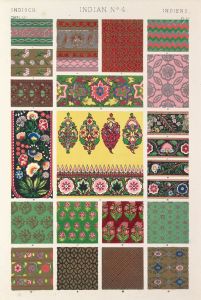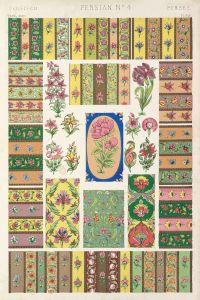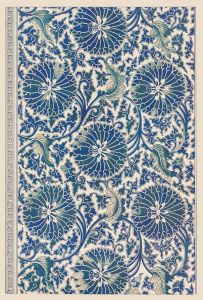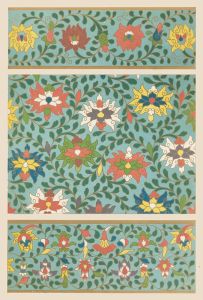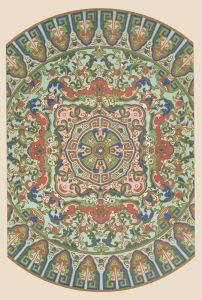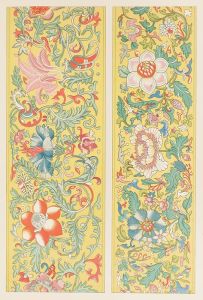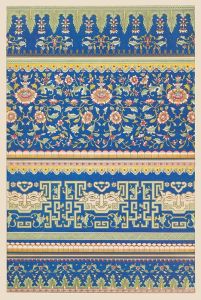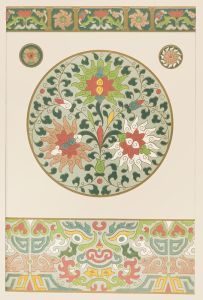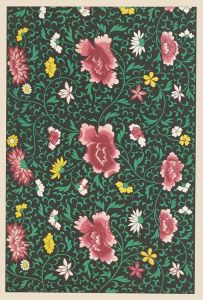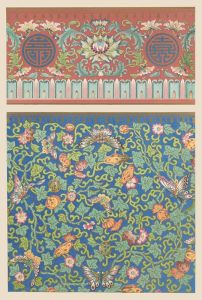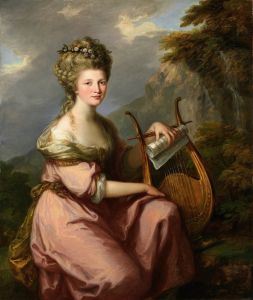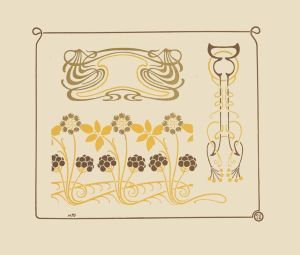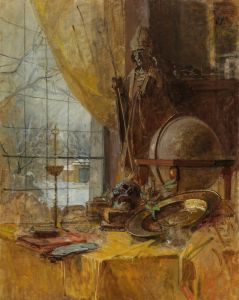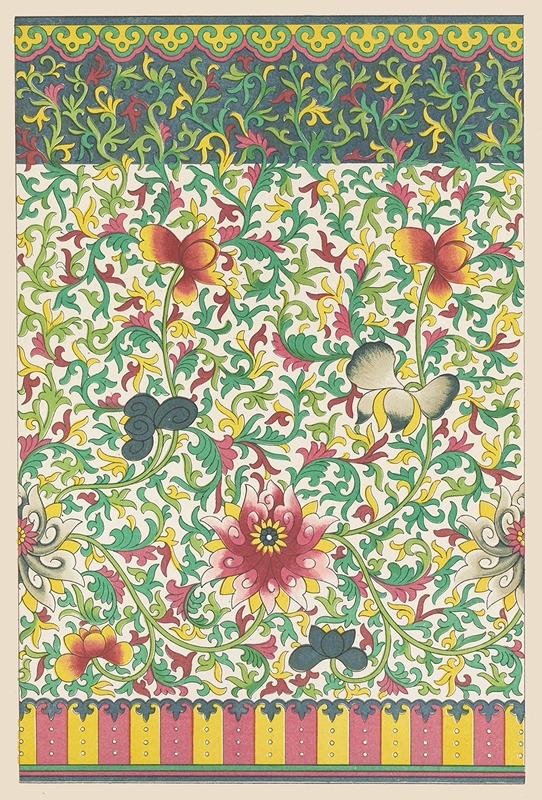
Examples of Chinese ornament, Pl.69
A hand-painted replica of Owen Jones’s masterpiece Examples of Chinese ornament, Pl.69, meticulously crafted by professional artists to capture the true essence of the original. Each piece is created with museum-quality canvas and rare mineral pigments, carefully painted by experienced artists with delicate brushstrokes and rich, layered colors to perfectly recreate the texture of the original artwork. Unlike machine-printed reproductions, this hand-painted version brings the painting to life, infused with the artist’s emotions and skill in every stroke. Whether for personal collection or home decoration, it instantly elevates the artistic atmosphere of any space.
"Examples of Chinese Ornament, Pl.69" is a work by Owen Jones, a prominent British architect and designer known for his contributions to the theory of design and his influential publications on decorative arts. This particular piece is part of his seminal work, "The Grammar of Ornament," first published in 1856. The book is a comprehensive study of decorative arts from various cultures around the world, and it played a significant role in the development of design theory during the 19th century.
Owen Jones was born in 1809 and became one of the most influential figures in the field of design. He was a proponent of the idea that design should be informed by historical precedents and cultural diversity. "The Grammar of Ornament" reflects this philosophy by showcasing a wide array of decorative styles, including those from ancient Egypt, Persia, Greece, and, notably, China.
Plate 69, specifically, is dedicated to Chinese ornamentation. In this plate, Jones presents a selection of Chinese decorative motifs, which are characterized by their intricate patterns, vibrant colors, and symbolic meanings. Chinese ornamentation often incorporates elements from nature, such as flowers, animals, and landscapes, as well as geometric patterns and calligraphic forms. These designs are not only aesthetically pleasing but also imbued with cultural significance, often representing concepts such as harmony, prosperity, and longevity.
Jones's depiction of Chinese ornamentation in "The Grammar of Ornament" was based on his studies and the available resources of his time. He aimed to provide a faithful representation of Chinese design principles, emphasizing symmetry, balance, and the harmonious use of color. The inclusion of Chinese motifs in his work highlights the global perspective that Jones advocated, encouraging Western designers to draw inspiration from a diverse range of cultural traditions.
"The Grammar of Ornament" was groundbreaking in its approach to design education. It provided a visual reference for designers and architects, promoting the idea that understanding and appreciating the decorative arts of different cultures could lead to more innovative and culturally sensitive design solutions. The book's influence extended beyond the 19th century, impacting the Arts and Crafts Movement and later design philosophies.
Jones's work, including Plate 69, remains a valuable resource for historians, designers, and artists interested in the cross-cultural exchange of artistic ideas. It serves as a testament to the enduring appeal and significance of Chinese ornamentation in the global history of design. Through his meticulous documentation and analysis, Owen Jones helped to elevate the status of decorative arts and foster a greater appreciation for the richness and diversity of global artistic traditions.





